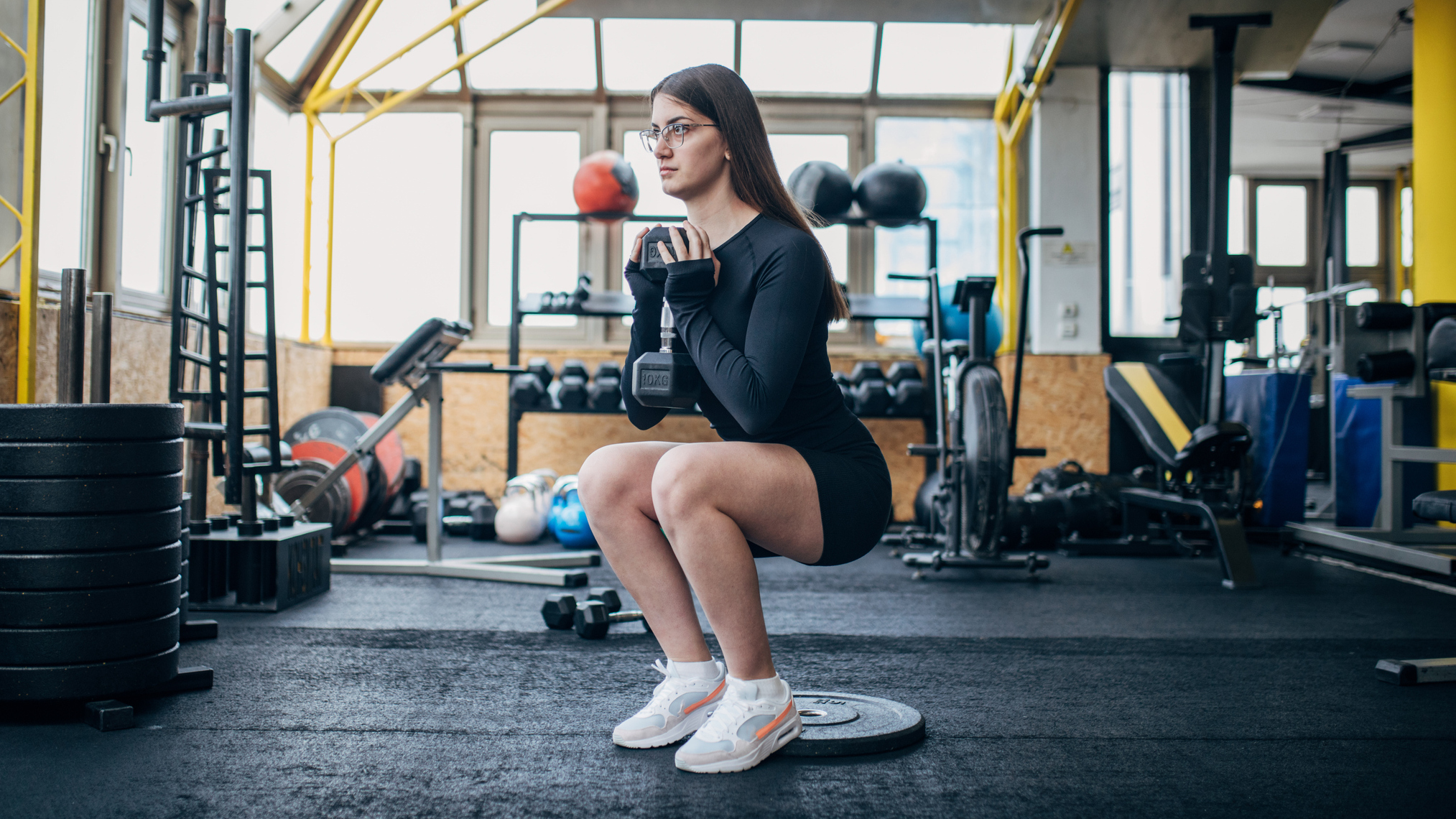I tried doing heel-elevated squats for a month—here's what it did to my body
My hips felt stronger, my back pain reduced and my ankle mobility improved


I'm a big fan of the traditional squat but doing the same move over and over often results in diminishing returns. So I decided to amp up my squat game by elevating my heels on a dumbbell. This variation allows you to get deeper into your squat—really useful if you have poor ankle or hip mobility. And the deeper you can go, the more muscle fiber recruitment, which leads to an increase in muscle size and strength.
Heel-elevated squats are also known to be effective for moving the focus from the glutes to the quads (the front of the thighs), which is important for knee health, so they are a good modification for anyone who wants to increase strength in this area of the body. You can do this move by standing on a dumbbell, weight plate, squat wedge like this one from Amazon or a book.
With all this in mind, I tried heel-elevated squats for a month and I was really happy with the results. I've gone into more detail about what this program did to my body below, but first, here's the expert view on heel-elevated squats—essential reading if you're planning on following my lead.
Heel-elevated squats—the expert's view
I asked Lori Diamos, a physical therapist from PT Pearls with 30 years of experience, to tell me more about the advantages of heel-elevated squats.
"Movement is medicine and variety keeps it effective," says Diamos. "Heel-elevated squats are a functional addition to any routine, preparing your body for real-life challenges like navigating slopes or uneven terrain. They're a great way to build strength, improve joint coordination, and keep your workouts fresh and functional. Just remember to warm up and start light, progressing as tolerated to maintain form and safety.
"Heel-elevated squats allow for a greater range of motion at the knees, shifting emphasis to the quads while reducing the mobility demands on the ankles, hips, and lower back. This makes them a fantastic option for targeting quadriceps strength while maintaining an upright trunk position, which is easier on the back."
Diamos also told me that heel-elevated squats could be good for people with knee issues, with some modifications. "By isolating the quads, these squats can strengthen the muscles that support the knee joint," says Diamos. "However, for those with knee pain or arthritis, I recommend starting with lower weight, higher reps, and a thorough warm-up to improve blood flow to the joints. If the movement causes pain despite adjustments, it's best to skip it.
Start your week with achievable workout ideas, health tips and wellbeing advice in your inbox.
"If you experience pain during the movement that isn't resolved by adjusting elevation, reps, or weight, this exercise may not be for you. As always, listen to your body and modify or substitute as needed."
My results

1. My quads got stronger
Having the heels raised means the torso is more upright which takes a lot of the pressure off the glutes and posterior muscles, and forces the quads to be the prime mover in hip extension. That's the case on paper and, I found, in real life too. After a month of doing this squat variation, I noticed my quads were much stronger.
2. My lower-back pain almost disappeared
This is one of the best benefits of doing elevated squats for a month—I realized that my lower-back pain had almost disappeared. As Diamos mentioned, raising the heels while squatting allows for a more upright trunk position, in turn "decreasing strain on the lumbar spine," says Diamos. "This makes it a safer way to squat for those with back pain while still engaging the whole posterior chain [the muscles that run along the back of your body],"
This alignment can minimize excessive lumbar flexion (the spine bending forward), which is often a cause of lower-back pain, according to a study published in the Journal of Strength and Conditioning Research.
3. My ankles were more mobile and flexible
Getting into a proper deep squat has always been a bit tricky for me because I lack ankle mobility, but after doing heel-elevated squats for a month I was delighted that my ankle mobility was less of an issue. It's such a simple thing, but just by standing on a dumbbell I really noticed how much deeper into the squat I could get, and I had significant improvements in my range of motion and dorsiflexion (backward bending of the foot).
"While the heel elevation reduces ankle mobility demands, the forward pitch challenges your calves—the gastroc and soleus muscles—to stabilize the movement, building strength and control," says Diamos. "So yes, they can contribute to ankle stability, though they’re not the sole solution.
"It's one in the toolbox. For direct ankle stability training, I’d add exercises like balance work or resisted calf raises. Heel-elevated squats complement these by building dynamic control in a functional, full-body movement."
Maddy Biddulph is a journalist specializing in fitness, health and wellbeing content, with 26 years in consumer media working as a writer and editor for some of the bestselling newspapers, magazines and websites in the US and UK, including Marie Claire, The Sunday Times and Women’s Health UK.
She is a CIMPSA-certified PT and works one-on-one with clients, as well as running Circuits Club classes which mixes cardio and strength training and chair-based exercise classes for seniors.
